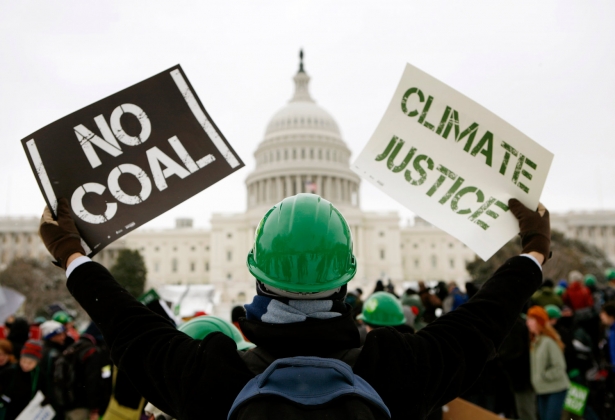hello deneme spain
February 7, 2014Chester boasts plenty of history as one of Europe’s "prettiest towns"
February 8, 2014
(Reuters/Kevin Lamarque)
It’s an odd thing, really. in certain precincts of the left, especially across a broad spectrum of what could be called the economic left, our (by which I mean humanity’s) accelerating trajectory toward the climate cliff is little more popular as a topic than it is on the right. In fact, possibly less so. (Plenty of right-wingers love to talk about climate change, if only to deny its grim and urgent scientific reality. On the left, to say nothing of the center, denial takes different forms.)
Sometimes, though, the prospect of climate catastrophe shows up unexpectedly, awkwardly, as a kind of non sequitur—or the return of the repressed.
I was reminded of this not long ago when I came to a showstopping passage deep in the final chapter of anarchist anthropologist David Graeber’s The Democracy Project: A History, a Crisis, a Movement, his interpretive account of the Occupy Wall Street uprising, in which he played a role not only as a core OWS organizer but as a kind of house intellectual (his magnum opus, Debt: The First 5,000 Years, happened to come out in the summer of 2011). Midway through a brief discourse on the nature of labor, he pauses to reflect, as though it has just occurred to him: “At the moment, probably the most pressing need is simply to slow down the engines of productivity.” Why? Because “if you consider the overall state of the world,” there are “two insoluble problems” we seem to face: “On the one hand, we have witnessed an endless series of global debt crises…to the point where the overall burden of debt…is obviously unsustainable. On the other we have an ecological crisis, a galloping process of climate change that is threatening to throw the entire planet into drought, floods, chaos, starvation, and war.”
These two problems may appear unrelated, Graeber tells us, but “ultimately they are the same.” That’s because debt is nothing if not “the promise of future productivity.” Therefore, “human beings are promising each other to produce an even greater volume of goods and services in the future than they are creating now. But even current levels are clearly unsustainable. They are precisely what’s destroying the planet, at an ever-increasing pace.”
Talk about burying the lead. Graeber’s solution—“a planetary debt cancellation” and a “mass reduction in working hours: a four-hour day, perhaps, or a guaranteed five-month vacation”—may sound far-fetched, but at least he acknowledges the “galloping” climate crisis and what’s at stake in it, and proposes something commensurate (if somewhat detached from the central challenge of leaving fossil fuels in the ground). That’s more than can be said for most others on the left side of the spectrum, where climate change is too often completely absent from economic and political analysis.
It’s unclear what explains this reticence about the existential threat facing humanity, beginning with the poorest and most vulnerable people on the planet—unless it’s that the implications of climate science, when you really begin to grasp them, are simply too radical, even for radicals.
Two years ago, the International Energy Agency reported that corporations and governments must shift decisively away from new long-term investments in fossil-fuel infrastructure—such as Keystone XL and any number of other projects—within five years, meaning by 2017, in order to avoid “locking in” decades of carbon emissions that will guarantee warming the planet, within this century, far more than 2°C above the preindustrial average, the internationally agreed-upon red line. But on December 3, the eminent climate scientist James Hansen, recently retired as head of NASA’s Goddard Institute for Space Studies, and seventeen co-authors released a study in the journal PLOS ONE confirming that the United Nations–approved 2°C ceiling has no real basis in science, only politics, and would itself set in motion “disastrous consequences” beyond humanity’s control.
Instead, according to Hansen and his co-authors, we should do everything we can to stay as close as possible to a ceiling of 1°C. Given that we’ve already warmed about 0.8°C in the past 100 years (with still more “baked in” as a result of the climate system’s lag time), you would be correct in concluding that the time frame in which to act is vanishingly short—and that the scale of action required is epically large. On our current trajectory, with global emissions still rising, we’re headed to at least 4°C this century. Even to have a shot at the 2°C goal, global emissions must peak by, say, 2020, and then plummet to near zero by mid-century. That may appear unlikely, but as Hansen et al. write, “There is still opportunity for humanity to exercise free will.”
Anyone who is committed to the hard work of bringing deep structural change to our economic, social and political systems—the kind of change that requires a long-term strategy of organizing and movement-building—is now faced with scientific facts so immediate and so dire as to render a life’s work seemingly futile. The question, then, becomes how to escape that paralyzing sense of futility, and how to accelerate the sort of grassroots democratic mobilization we need if we’re to salvage any hope of a just and stable society.
A lot of people I know in the climate movement think the left, and the economic left in particular—pretty much the entire spectrum from mainstream liberals to Occupy radicals—has not yet taken on board the scale and urgency of the climate crisis. Not really. Not the full, stark set of facts. At the same time, mainstream climate advocates, wanting to broaden the climate movement, are told that they have too often been tone-deaf on issues of economic justice and inequality. How to reconcile these? How to merge the fights for economic justice and climate action with the kind of good faith and urgency required to build a real climate-justice movement?


